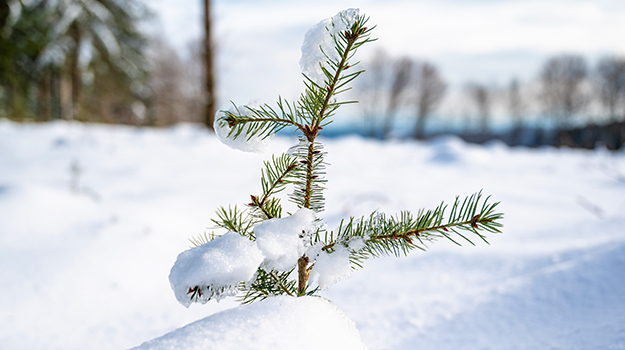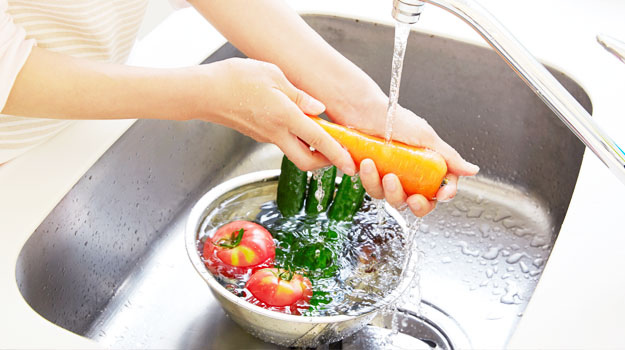
Fruits and vegetables are one of the most important parts of our diet. With the summer almost over and fall about to begin, it's harvest time in the garden. To avoid wasting food, it is important to know various preservation techniques.
Preservation methods
Several different methods are possible to preserve your fruits and vegetables. To find which one suits you best, it is important to learn more about each of them. The various techniques include: dehydration (drying), freezing, preserves and marinades.
Dehydration (drying)
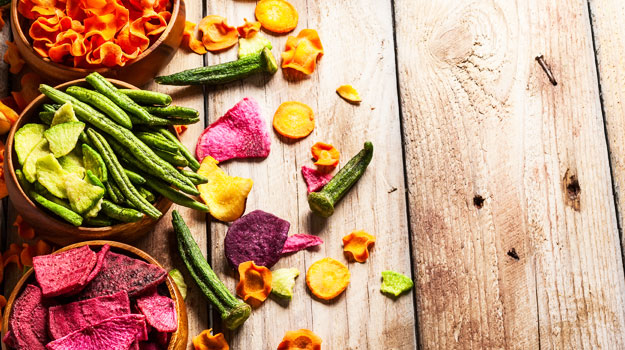
One of the oldest preservation methods for fruits and vegetables is dehydration, also called "drying". This technique consists in removing all of the water from foods. Simple and natural, dehydration preserves the original taste of fruits and vegetables.
You can do it using a conventional oven or a dehydrator, or you can leave your fruits and vegetables in the sun, in the open air.
Dehydrating in the oven
One of the advantages of this method is everyone has an oven at home. Fruits and vegetables are not dried the same way. Here are a few simple steps to follow to dehydrate fruits and vegetables in the oven.
Dehydrating fruits in the oven
- Wash and dry your fruits.
- Peel them and cut the biggest into quarters.
- Remove the pits from fruits like apricots, peaches and plums.
- Add a few drops of lemon juice on fruits that tend to turn brown, such as apples.
- Place your fruits flat on the oven shelf or cooking plate.
- Set the temperature to between 50 °C (120 °F) and 70 °C (160 °F).
- The oven door must remain slightly open so the moisture can get out.
- Leave to dry for about 6 hours.
- When the fruits are ready, place them into an airtight container and leave the lid open for 2 to 3 days.
Dehydrating vegetables in the oven
- Start by blanching them for a few minutes in boiling water.
- Dry them and cut them.
- Place your vegetables flat on the oven shelf or cooking plate.
- Set the temperature to between 40 °C (105 °F) and 65 °C (150 °F).
- The oven door must remain slightly open (about 2 cm).
- Leave to dry for 7 to 8 hours.
- When your vegetables are ready, place them in an airtight bag or container.
Dehydrating in the open air
To dry fruits and vegetables in the open air, it is essential to place them in a dry and clean location. They must be protected from both dust and insects. You can put them on a rack or wooden slats, or string them. This method requires patience as fruits and vegetables can take a few days to dry.
Drying with a dehydrator
If you think you will dry foods on a regular basis, it could be a good idea to buy a dehydrator. Follow the instructions of your machine, as they can vary from one dehydrator to another. Drying times also vary from one machine to another.
Freezing
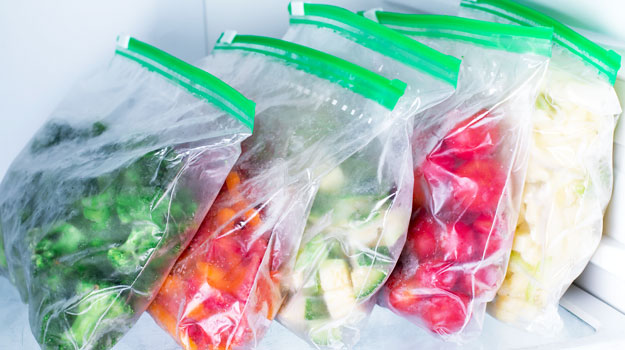
Freezing your fruits and vegetables is a great way to preserve them longer. However, before freezing them, they must be prepared properly.
Freezing is a simple method, but fruits and vegetables aren't prepared the same way. Here are a few steps to follow.
Freezing fruits
- Start by rinsing and washing your fruits. Don't forget to dry them well.
- If your fruits have seeds or pits, remove them.
- For apples, peaches and apricots, add lemon juice to keep them from blackening while frozen.
- Place your fruits on a tray in the freezer for about 24 hours so they harden thoroughly.
- Finally, place your fruits in an airtight bag in the freezer.
Freezing vegetables
- Blanch your vegetables before freezing them to stop the aging process. This will preserve their taste, colour, vitamins and texture. Each vegetable has its own blanching time.
- Stop the cooking process by immersing them in cold water. Change the water on a regular basis until the vegetables have cooled down.
- Finally, place your vegetables in an airtight bag in the freezer.
Preserves
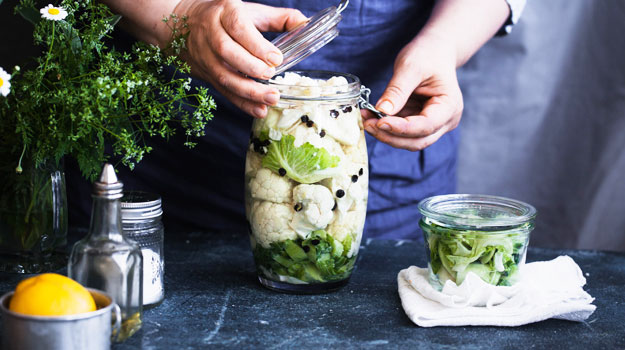
Preserves remain the classic method our mothers and grand-mothers used. Before doing that, you can turn your fruits into jams, jellies, coulis, syrup, marmalade or butter.
- Check your Mason jars to make sure they are in good condition.
- Clean them in hot, soapy water and rinse them.
- Sterilize them in a saucepan of boiling water for 15 minutes. Keep them warm until use.
- Sterilize the lids for 5 minutes in hot (but not boiling) water. Keep them warm until use.
- Fill the jars with the marinade (it should still be warm).
- Fill up to about 1 cm from the lid.
- Use a wooden spoon to remove the pockets of air along the side of the jar.
- Clean the jars with a damp cloth.
- Place the lids over the jars. Tighten the rings, but not too much to let the air out.
- Sterilize the jars in boiling water. Duration can vary from one recipe to another.
- Take the jars out and let them rest for 24 hours without moving them.
- When cooling, the lids will seal with a pop sound. Then you will know they are sterilized and closed hermetically.
Marinating vegetables
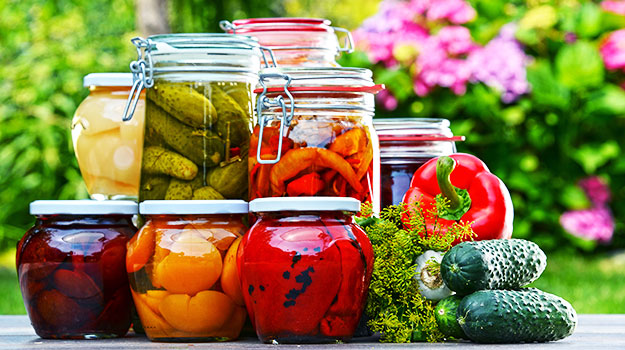
Finally, marinating vegetables is an economical option that allows you to keep raw vegetables while preserving their vitamins. Follow these steps to marinate vegetables:
- Use the freshest foods possible.
- Cut your vegetables in even pieces.
- Blanch them for 2 minutes.
- In a saucepan, bring water, white vinegar, coriander and mustard seeds, salt, and sugar to a boil.
- Clean and sterilize a few Mason jars.
- Place your vegetables in the jars.
- Pour the hot marinade over the vegetables.
- Seal the glass jars hermetically once their content has cooled down.
- Wait 15 days, and eat them within 3 months.
For more information, consult our guide : Storage of vegetables

